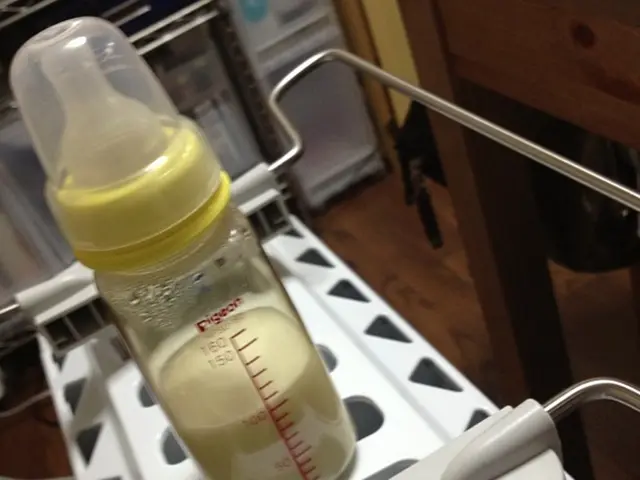Mitochondrial DNA Deletions in Kearns-Sayre Syndrome: Classifications and Impact on Cellular Functioning
Kearns-Sayre Syndrome (KSS) is a rare, chronic, and progressive condition that primarily affects the eye muscles, leading to progressive weakness or paralysis (ophthalmoplegia) and retinopathy, a condition involving damage to the retina. Typical ocular symptoms include ptosis (drooping eyelids) and pigmentary retinopathy, with the onset usually occurring before the age of 20[1][3].
Beyond eye-related symptoms, KSS is a mitochondrial myopathy and can also manifest with fatigue, muscle weakness, and cardiac problems due to its multi-system involvement, though the primary hallmark is the eye muscle paralysis and retina damage[1][5].
RNA, a molecule similar to DNA, has a crucial role in KSS. tRNA, a type of RNA, is folded into a clover shape and binds to messenger RNA (mRNA) as it is being read by the ribosome during protein synthesis. In KSS, spontaneous mutations in mitochondrial DNA (mtDNA) can affect the synthesis of these RNAs, leading to defects in protein production[2].
Mitochondria, the organelles responsible for generating energy in the form of adenosine triphosphate (ATP), are significantly impacted by these mutations. The remaining genes in mtDNA code for transfer-ribonucleic acid (tRNA) and ribosomal RNA (rRNA), which are essential for ATP production. Any defects in the synthesis of these proteins can lead to defects in ATP production, hindering the ability of the mitochondria to produce sufficient amounts of ATP[2].
Mitochondrial DNA (mtDNA) is passed down solely via maternal inheritance, and KSS arises due to a spontaneous mutation in mtDNA. Investigations for KSS may include electrocardiogram, lumbar puncture, eye test, magnetic resonance imaging (MRI scan), and next-generation sequencing (NGS) of mtDNA[1].
Regarding treatment, there is no cure or disease-modifying therapy for KSS. Management primarily focuses on symptomatic treatment and supportive care, including monitoring and managing cardiac complications, addressing visual problems with appropriate ophthalmic interventions, and genetic counseling for affected families[1]. Some supportive approaches include ophthalmic lubricants or sunglasses for secondary effects, but no established treatments exist to reverse or halt disease progression[1][2].
Currently, there are no approved therapies to treat KSS directly, but Mitochondrial Augmentation Therapy (MAT) shows promising results in improving symptoms[3]. Mitochondrial DNA consists of 37 genes which code for 13 proteins essential for aerobic respiration. Understanding these genes and their role in KSS could pave the way for future treatments and a better understanding of this rare condition.
[1] National Organization for Rare Disorders. (n.d.). Kearns-Sayre Syndrome. Retrieved from https://rarediseases.org/rare-diseases/kearns-sayre-syndrome/ [2] Mayo Clinic Staff. (2021, January 25). Kearns-Sayre syndrome. Retrieved from https://www.mayoclinic.org/diseases-conditions/kearns-sayre-syndrome/symptoms-causes/syc-20352703 [3] National Institutes of Health. (2021, February 17). Mitochondrial Augmentation Therapy. Retrieved from https://www.nih.gov/news-events/nih-research-matters/mitochondrial-augmentation-therapy-shows-promise-treating-mitochondrial-diseases
- The damage to the retina in Kearns-Sayre Syndrome (KSS) is a type of chronic medical-condition that often involves neurological-disorders.
- While there is no disease-modifying therapy for KSS, health-and-wellness management primarily focuses on symptomatic treatment and supportive care, especially for chronic diseases like cardiac problems and vision issues.
- The RNA molecule plays a significant role in KSS, and any defects in the synthesis of proteins can lead to defects in ATP production, contributing to the health issues associated with this syndrome.
- With advancements in science, Mitochondrial Augmentation Therapy (MAT) shows promise as a potential treatment for KSS, which is a mitochondrial myopathy that can manifest with various health-related symptoms.




